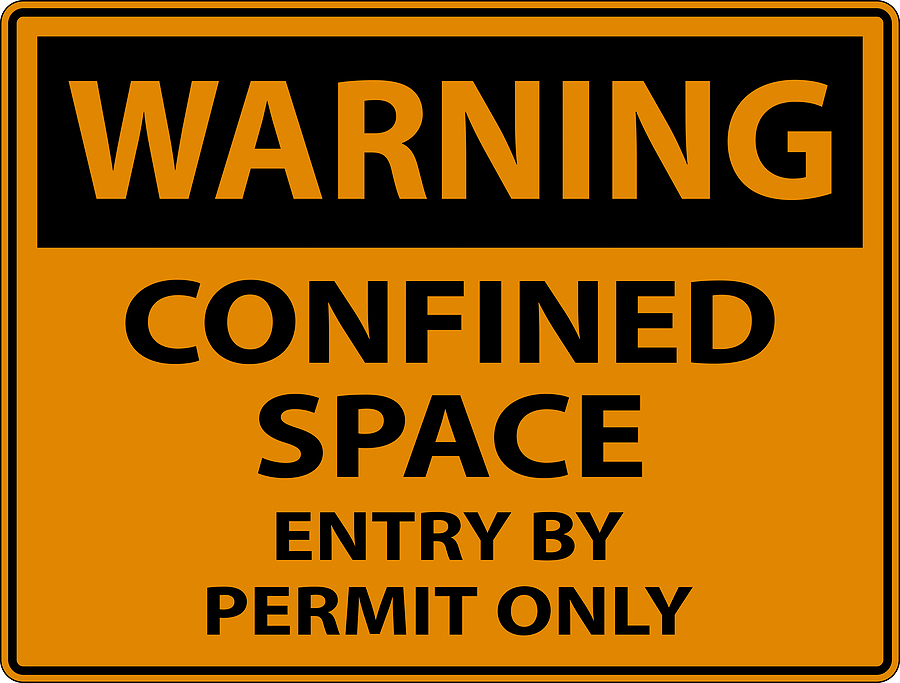Top Risks that Turn Confined Spaces into Danger Zones

Working in confined spaces can be dangerous. However, you may have to work in such confined spaces due to the nature of work you do. In such situations, you should be aware of the risks that you will have to deal with. This understanding can help you to avoid such risks and ensure your safety.
What is a confined space?
A confined space refers to an enclosed area, which has a higher risk of injury from dangerous conditions or the presence of hazardous substances. The main reason why these spaces are dangerous is because they are enclosed. There can be limited openings in these spaces. Some perfect examples for confined spaces include tanks, sewers, silos, and drains. You will have to get to these places for inspections or maintenance work regularly.
You will also have to deal with confined space when you are involved with construction work. Likewise, some areas can become confined space based on the nature of work carried out.
Understanding the hazards linked with confined space
Now you have a clear idea on what confined spaces are all about. With that in mind, let’s take a look at the common hazards associated with confined spaces.
Lack of oxygen
Reactions that take place within the confined spaces can take away oxygen. For example, a reaction that takes place in between oxygen and a certain type of soil produces carbon dioxide. This will create an unhabitable place for you as you cannot breathe. Likewise, rust formed inside the tanks can also result in lack of oxygen.
Vapors, fumes, and gases
Fumes and poisonous gases can build up in a confined space. This is a major risk associated with confined spaces where you don’t find enough ventilation. A contaminated land or a burst pipe can make deadly gases leak into such a confined space. Paint fumes, adhesives, and welding can also result in such toxic gases. When there aren’t any ventilation or extraction methods in place, you will end up with a toxic atmosphere where you can’t breathe.
Flood
Liquids can flood a confined space as well. This is something that you should keep in mind when working on a sewer or drainage. If you don’t get out on time, you will end up with drowning in such a flood.
There can be situations where solid matter can also flood a confined space. It can happen during a trench collapse. Such situations can make you either buried or trapped. Since confined spaces are small, flooding can take place within a matter of few seconds. You will not have any time at all for escape.
Dust
There is a possibility for dust to build up in confined spaces as well. It can happen due to the nature of work that you do, or through a natural process. When there is excessive dust, you will end up breathing them. This will eventually lead you to respiratory problems. Excessive breathing of dust can be fatal to your health as well. Moreover, the build up of dust can also increase the risk of an explosion, especially if there is no ventilation.
Fire hazards
When there are flammable liquids, vapes, dust, and gases present within the confined space, you will have to deal with a fire hazard. All it needs is a spark for a fire to happen. Oxygen is another important factor that should be present for a fire to happen. This is why you should not fill up the confined spaces with too much of oxygen. It will increase the risk of fire hazards.
Temperature
When you continuously engage with strenuous work, you will increase your body temperature. It can also happen due to external environmental conditions around you. This will make you encounter difficulties when trying to escape from confined spaces. You should be mindful about the heat strokes, exhaustions, and collapses that can happen at confined spaces.
Access restrictions
Restrictions in access can also make confined spaces dangerous. This is a reason why emergency rescue can be troublesome when someone is trapped within a confined space. When you are inside a confined space, you will not be able to get out easily. Therefore, you should have a clear idea on how to carry out your work safely, before even getting in. Likewise, you need to ensure that emergency arrangements are available if needed.
How to control hazards in confined spaces
If you have to work in confined spaces due to the nature of job you do, it is important to understand how to overcome the risks. Make sure that you get a proper safety training for this. Then you can make sure that you don’t end up with any injuries or fatalities due to the nature of work that you do within a confined space.
